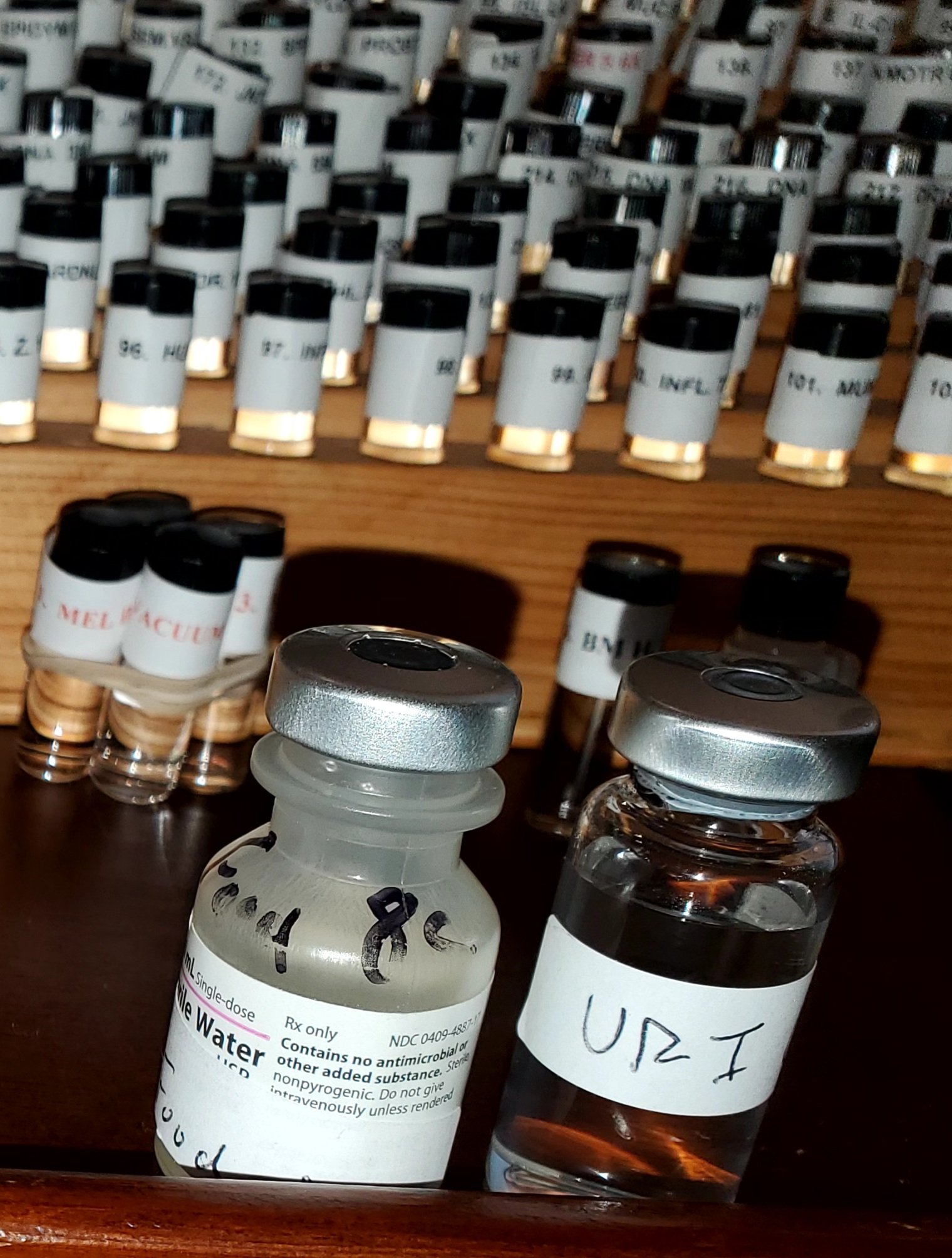Low-dose immunotherapy, (LDI), is a revolutionary treatment that has been shown to provide dramatic relief of symptoms and improvement in health for patients with a wide range of chronic illnesses, including food allergies and chemical sensitivities, Lyme disease, chronic fatigue syndrome, fibromyalgia, Hashimoto’s, multiple sclerosis, Crohn’s disease, ulcerative colitis, interstitial cystitis, and lupus. It is effective and originally used for chronic allergies, where the treatment is called Low Dose Allergen (LDA).
How does LDI work?
LDI works by helping the immune system restore proper balance by reducing inflammation caused by foreign invaders (LDI) or allergens (LDA). LDI brings the immune system more in balance, helping it to fight pathogens more effectively.
With a number of infections, the body’s immune system is able to kill the majority of pathogens, but a small number of pathogens are able to evade the immune system. The small number of remaining pathogens continue to stimulate a maladaptive inflammatory response that leads to chronic illness, including chronic Lyme disease, chronic fatigue syndrome, fibromyalgia, and a wide variety of autoimmune diseases.
We know that Lyme-related bacteria can be difficult to completely eliminate from the body due to the bacteria’s ability to mutate and hide within the body. But even if the bacteria are almost completely destroyed by antibiotic therapy, this may not turn off the immune response that is causing most of the symptoms. In this case, chronic Lyme is more like an autoimmune disease.
Most autoimmune diseases are triggered by an initial infection. As the immune system fights the infection, it may begin to confuse the body’s own proteins with proteins made by foreign invaders such as bacteria and viruses. Even after the bacteria have been eliminated, the immune system remains activated, and an autoimmune reaction triggered by the bacteria has been launched.
What is in an LDI dose?
LDI combines specific antigens (bacteria, toxins, or other foreign substances that induce an immune response in the body) at extremely low levels (sometimes diluted beyond Avagdros number or 10 to the 23rd power). So, for example, let’s say that the patient’s LDI dose included food antigens. Similar to how one goes to the allergy and gets allergy shots, the LDI dose exposes the body to extremely low levels of the food antigens to induce immune tolerance, such that when that food is encountered again, the immune systems are less stimulated or activated. In this way, LDI can create immune tolerance to Lyme, Parasite, Viral, Chemicals, and many other possible antigen or antigen combinations.
How is LDI Administered?
LDI can be administered by intradermal injection or by sublingual dosing. We utilize sublingual dosing with great success. Doses given sublingually are placed under the tongue and held for a short period of time, typically about 20 seconds. In sublingual dosing, the treatment is absorbed through the mucus membranes in the mouth.
There is a wide range of LDI antigens for numerous conditions along with a wide range of doses of LDI. After the initial dose, it is generally given once per week until an effect is seen, then it is dosed once every seven to eight weeks, though a booster dose can be given if a patient’s improvement diminishes and symptoms return before the seven-week mark.
What Results Can You Expect?
LDI has a different result in each patient. For some patients, improvement in symptoms can be immediate or seen the very next day. Results can last for a few days to several weeks until the dose is repeated.
One of the great benefits of LDI treatment is that each dose can be customized to the appropriate strength for the patient. The key to successful treatment with LDI is to find the correct dose for each patient. Some patients who are weaker or sicker will have better results on a much weaker dose than can be given for a patient who is stronger. It is better to start on a weaker dose and work your way up to the stronger dose than to start on a strong dose and have a flare-up of symptoms. It may take a number of weeks to work up to a dose that is effective. Once that dose and particular antigen is determined, the treatment is then given every seven to eight weeks.
As patients progress through each dose, symptom relief lasts longer. Often by the 4th or 5th exposure to the LDI/LDA, patients will see significant relief from symptoms for the full seven weeks between treatments. At this point, the interval between treatments is typically stretched out – waiting until symptoms return before giving the next dose. After a period of time, patients may need injections/sublingual dosing only once or twice per year to stay in remission.
Are there any risks to taking LDI?
While most respond favorably to LDI, there is, on occasion potential for a detox reaction or a Herxheimer reaction. As the body detoxifies, it can, on occasions experience flu-like symptoms including headache, joint and muscle pain, body aches, sore throat, general malaise, sweating, chills, nausea, or other symptoms. These responses are generally mild and often last a couple of days. Having these types of reactions could be a sign that the proper target antigen has been found. Further dilution and titrations of the LDI dose would be needed.
What conditions have shown improvements with LDI?
Low-dose immunotherapy has been shown to be a supportive integrative treatment for many chronic illnesses that previously had no effective treatment options, or which were often treated with expensive and toxic prescription medications. In conjunction with traditional and other integrative therapies, some of the chronic health challenges that have seen improvement with LDI therapy include Food Allergies, Chemical sensitivities, Mold sensitivities, Environmental Allergies (Pollens, Dust, etc.), Fatigue, and Brain Fog.
Please contact our office for more information or for more detail with regards to LDI.



